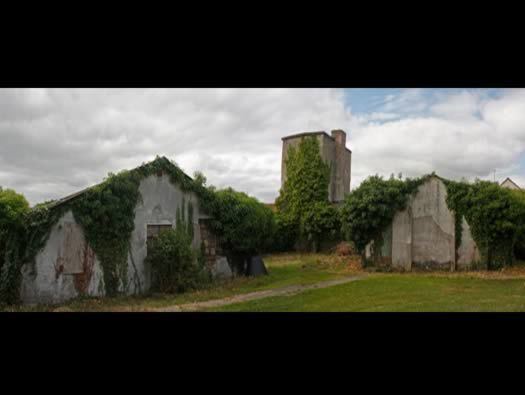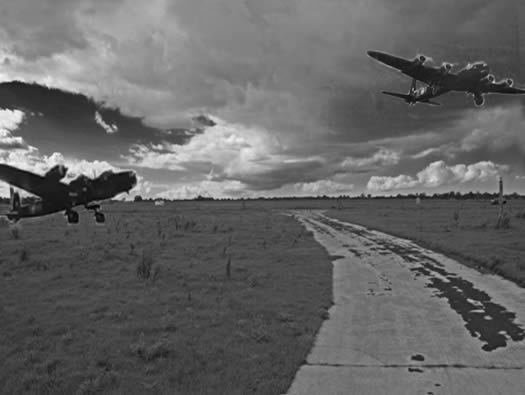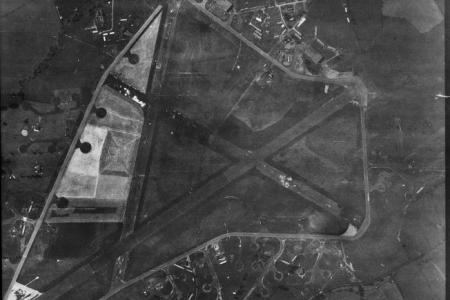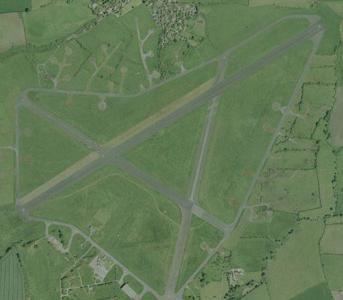Airport type Military Elevation AMSL 39 ft / 12 m Year built 1941 | In use 1942-1947 (1947) 00/00 0 Owner Air Ministry | |
 | ||
Operator United States Army Air ForcesRoyal Air Force | ||
Herk dropping garbage at raf keevil
Royal Air Force Station Keevil or more simply RAF Keevil is a former Royal Air Force station located 4 miles (6.4 km) east of Trowbridge, Wiltshire, England.
Contents
- Herk dropping garbage at raf keevil
- USAAF use
- 62nd Troop Carrier Group
- 153d Observation Squadron
- 363d Fighter Group
- RAF Fighter Command use
- RAF Flying Training Command use
- Postwar military use
- Current use
- References

The airfield was built on a site previously ear-marked for the purpose in the mid-1930s. Consisting of 3 long concrete runways the airfield was used by the Royal Air Force and the United States Army Air Forces Eighth and Ninth Air Forces.

USAAF use
In 1942 Keevil airfield was provided to the USAAF and was assigned USAAF designation 471 (KV).
62nd Troop Carrier Group

The first American unit assigned to Keevil was the 62nd Troop Carrier Group, arriving at Keevil on 6 September 1942 from Florence AAF, South Carolina. The group consisted of the following operational squadrons:

The group transported military freight and supplies using C-47 and C-53 aircraft. The unit remained in England until 15 November until being transferred to Tafaraoui Airfield, Algeria as part of Twelfth Air Force.
153d Observation Squadron

After the departure of the transport group, Keevil saw the arrival of the 153rd Observation Squadron from the 67th Recon Group at RAF Membury in December 1942.
From Keevil the squadron flew a combination of Douglas Bostons, Douglas A-20 Havocs and Supermarine Spitfires. In March 1944 the 153d OS was disbanded, then re-formed for duties as the 2911th Bomb Squadron as a liaison and communications squadron, being equipped with Stinson L5s at RAF Erlestoke.
363d Fighter Group
On 20 December 1943, the Ninth Air Force 363d Fighter Group moved to Keevil from Sacramento AAF California. The group consisted of the following operational squadrons:
The group awaited its operational aircraft until 22 January 1944 when the group moved to RAF Rivenhall in Essex.
RAF Fighter Command use
With the departure of the Americans, the RAF used Keevil beginning in March 1944 for 196 and 299 Squadron. Short Stirling glider tugs of No. 38 Group RAF arrived, followed by a large number of Horsa gliders, crewed by Army pilots of the Glider Pilot Regiment.
The RAF Stirling aircraft were crewed by RAF, RCAF, RAAF, RNZAF and SAAF personnel and were engaged in SOE and SAS drops. largely in France, and in glider towing. Their involvement in the Normandy invasion of France and Operation Market-Garden is well remembered by Keevil and Steeple Ashton villagers. Casualties of army and air force personnel were heavy and a number of aircraft were lost.
RAF Flying Training Command use
The departure of these units to East Anglia brought Keevil to a training role when in October 1944 No.22 Heavy Glider Conversion Unit arrived, with their twin-engined Albermarle aircraft and Waco Hadrian Gliders.
They in turn were replaced in June 1945 by 61 Operation Training Unit converting newly qualified pilots on to Spitfires and, later, on to Mustangs. 61 OTU in due course became 203 Advanced Flying School and moved to Chivenor in Devon in July 1947 and this marked the end of RAF Keevil as a fully staffed and equipped operational airfield.
Postwar military use
Between 1955 and 1964 the United States Air Force used the base occasionally. During 1956 and 1957, Keevil was used as a satellite airfield for "ab initio" training by No 2 Flying Training School, based at RAF Hullavington. Aircraft included the Mk 1 Percival Jet Provost. Keevil was kept in reserve status until 1965 when it was closed.
Current use
With the end of military control, Keevil airfield is virtually complete with all of its runways, perimeter track and many of the hardstands still in place. It is used occasionally for British Army and RAF exercises.
Since 1992 it has been home to the Bannerdown Gliding Club, an RAF Gliding and Soaring Association Club, affiliated to RAF Brize Norton since the closure of the nearby RAF station at Lyneham. The airfield is occasionally used as a motorsport circuit for various events. It is also the home of the Warminster and District Radio Control flying club.
In September 1994 the Keevil Society, organised by Paul Vingoe, held a Commemorative Day to mark the 50th anniversary of the D-Day and Arnhem operations and to dedicate a memorial to all who served at Keevil, especially those who flew from there and lost their lives.
